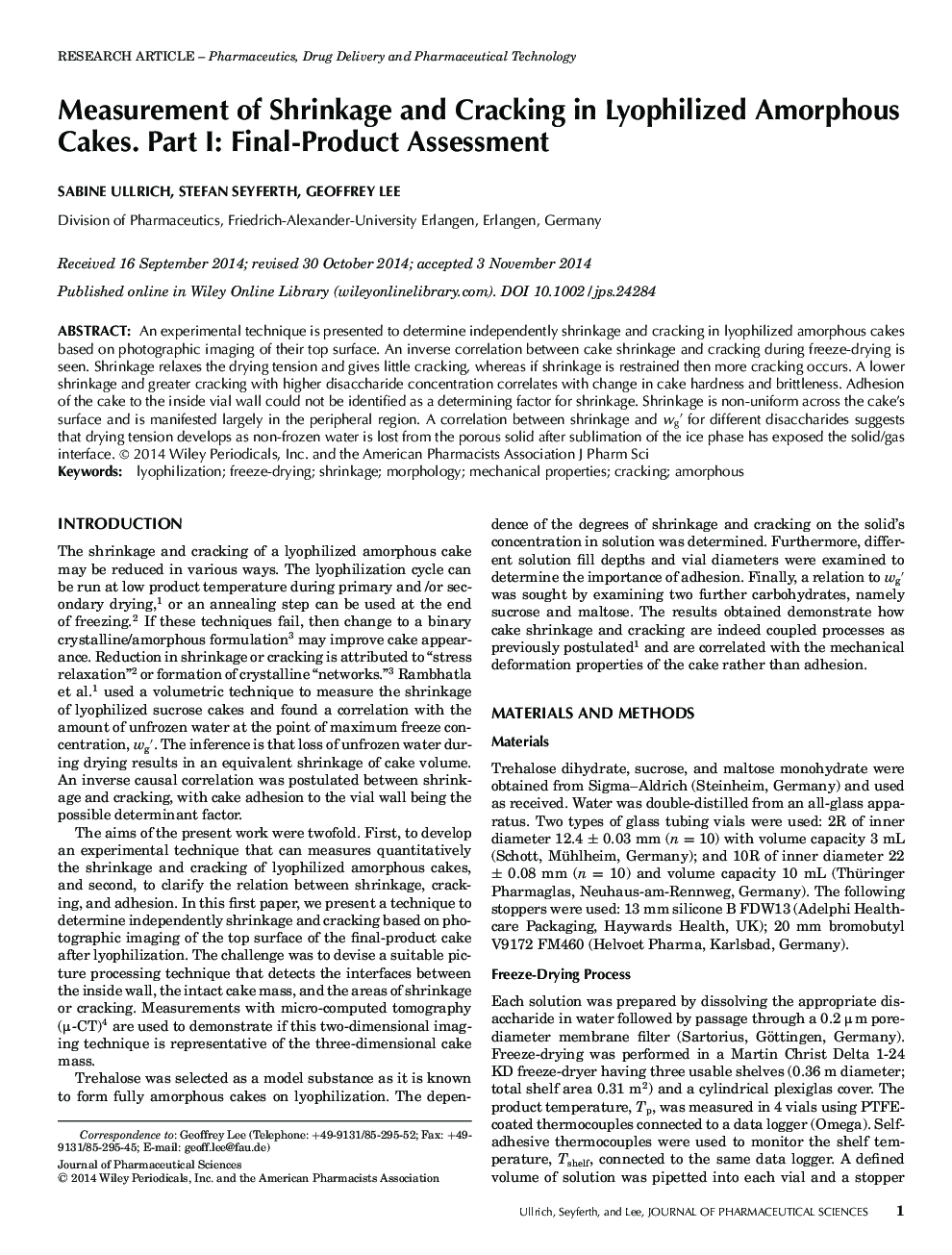| Article ID | Journal | Published Year | Pages | File Type |
|---|---|---|---|---|
| 2484632 | Journal of Pharmaceutical Sciences | 2015 | 10 Pages |
Abstract
An experimental technique is presented to determine independently shrinkage and cracking in lyophilized amorphous cakes based on photographic imaging of their top surface. An inverse correlation between cake shrinkage and cracking during freeze-drying is seen. Shrinkage relaxes the drying tension and gives little cracking, whereas if shrinkage is restrained then more cracking occurs. A lower shrinkage and greater cracking with higher disaccharide concentration correlates with change in cake hardness and brittleness. Adhesion of the cake to the inside vial wall could not be identified as a determining factor for shrinkage. Shrinkage is non-uniform across the cake's surface and is manifested largely in the peripheral region. A correlation between shrinkage and wgâ² for different disaccharides suggests that drying tension develops as non-frozen water is lost from the porous solid after sublimation of the ice phase has exposed the solid/gas interface. © 2014 Wiley Periodicals, Inc. and the American Pharmacists Association J Pharm Sci 104:155-164, 2015
Related Topics
Health Sciences
Pharmacology, Toxicology and Pharmaceutical Science
Drug Discovery
Authors
Sabine Ullrich, Stefan Seyferth, Geoffrey Lee,
